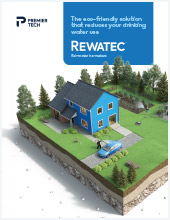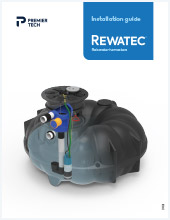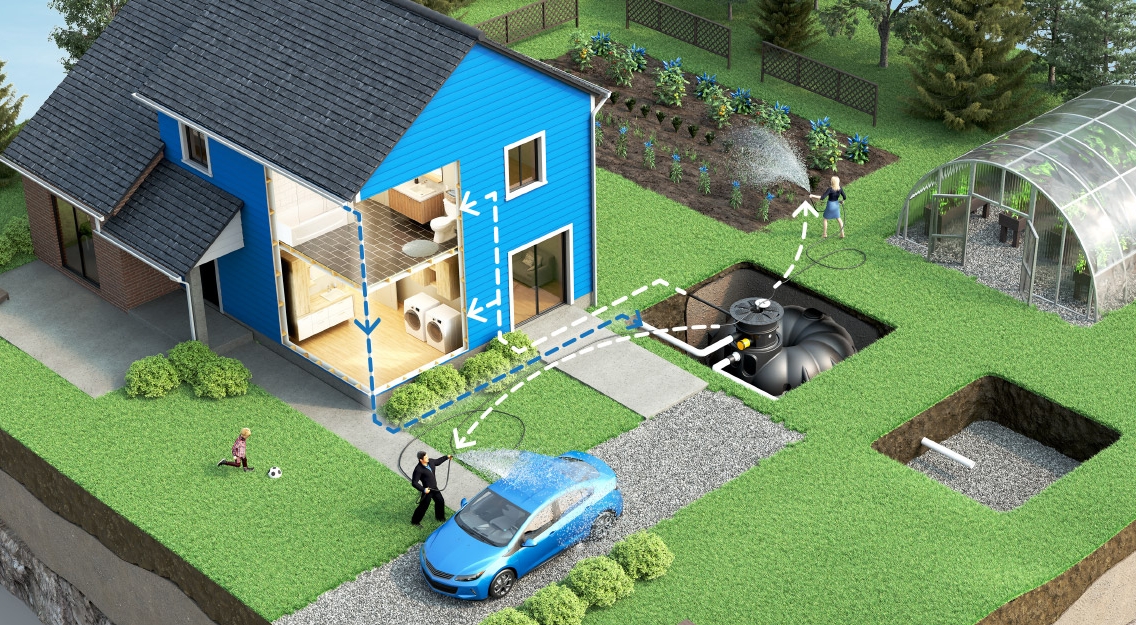Rainwater harvesters
Rewatec rainwater harvesters limit the damaging effects of runoff and give you 24/7 access to fresh water for toilets, gardens, fire hydrants, and more.

Reduces drinking water use
Manages runoff and prevents floods
Earns points for LEED certification
Pre-assembled systems
Residential and large-scale options
Ideal for new builds and retrofits
Switches water source as needed
Needs no water softeners
Works in all seasons
Aboveground or underground tanks
Personalized storage capacities
Kits tailored to your needs
What is a rainwater harvester?

A rainwater harvester is the best way to collect and store rain for a complete range of applications, from single dwellings to commercial and municipal projects.
Rewatec rainwater harvesters (formerly Éconeau rainwater harvesting systems) are ideal for any roof type. They can easily be configured for winter use, giving you all-season access to abundant — and free — rainwater that contains no minerals, chemicals, or heavy metals.
Applications
- homes and seasonal cottages
- office buildings
- schools
- microbreweries and wineries
- orchards
- community pools
- ice rinks
- projects seeking LEED certification
How do our rainwater harvesters work?
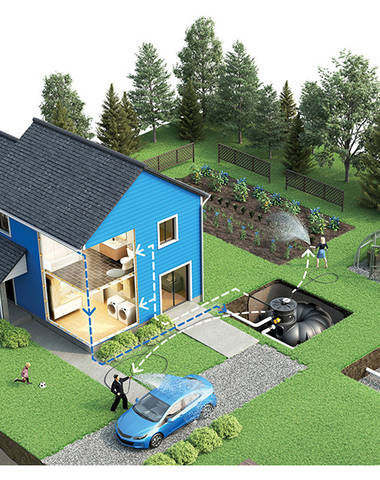
Collection
Rainwater is first collected by rain gutters (for sloped roofs) or a drain (for flat roofs). It then reaches a primary filter that prevents leaves, insects, and other debris from entering the system. Water that passes through the filter flows into a storage tank.
Storage
Collected rainwater is stored in a leak-proof tank that is installed on the property or inside a building.
The tank is equipped with a circulation system that prevents water stagnation. During a downpour, this system evacuates liquid at the bottom of the tank to ensure that only the freshest water remains.
Rainwater use
Using harvested rainwater is simple. A specially designed pump directs stored water through a micro-filter that removes any small particles, then provides optimal pressure to supply appliances, plumbing fixtures, and building systems.
If no rainwater is available in the storage tank, all appliances are automatically and reliably supplied from the regular water system.
Rainwater harvester maintenance
Rewatec rainwater harvesters are designed to operate reliably and autonomously for years. But, like all rainwater recovery systems, they require periodic maintenance to ensure high performance.
As part of this simple maintenance schedule, the property owner should:
- rinse ground filters twice per year (spring and fall)
- rinse the toilet-supply filter (every three to six months)
- empty aboveground tanks, open the taps, and put the pump into storage (for seasonal use)
Rainwater harvester warranty
Our rainwater harvesters come with a 10-year warranty for underground storage tanks.
Rainwater harvester brochures, guides, and manuals
Why harvest rainwater?
According to a report from Statistics Canada, the average Canadian uses 220 L of water at home every day.
This water is treated and distributed by costly municipal systems, and yet only a small fraction of it is used for functions that actually require potable water.
The scale of waste is enormous — and so is the opportunity it gives us to protect precious drinking water supplies by making better use of rain.
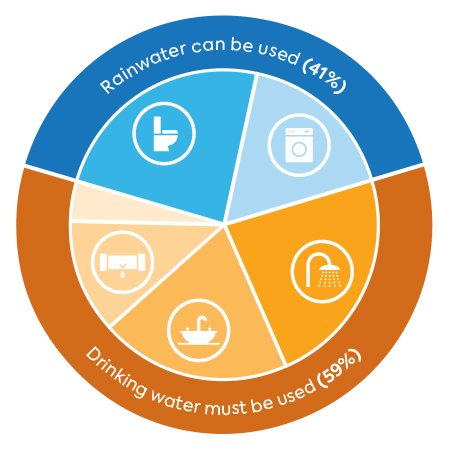
Uses for rainwater
Harvested rainwater can be used in countless ways. Some of the more common uses include:
- flushing toilets and urinals
- washing clothes
- washing vehicles
- watering and irrigation
- filling pools and spas
- flooding ice rinks
- cleaning roads and sidewalks
- supplying fire hydrants
- watering livestock
How big should your rainwater tank be?
Calculating the ideal capacity of your underground rainwater storage tank is easy!
Our simple tool finds your rainwater harvesting potential, estimates your consumption, and recommends the right storage tank capacity for your needs.
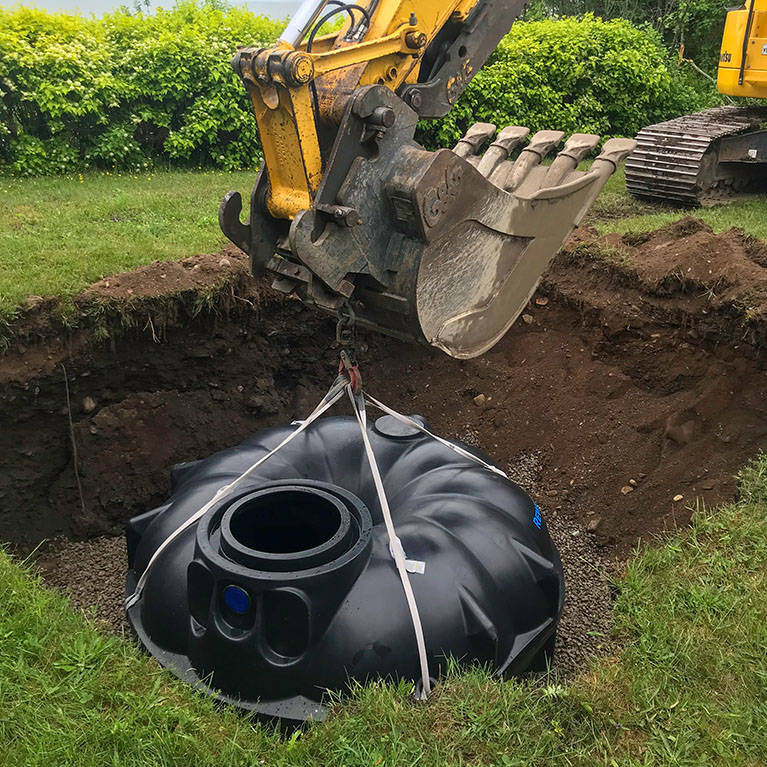
Available models
We customize Rewatec rainwater harvesters based on your unique needs. Start by browsing through our range of products, then let us personalize your solution to help you get the most out of available rainwater.
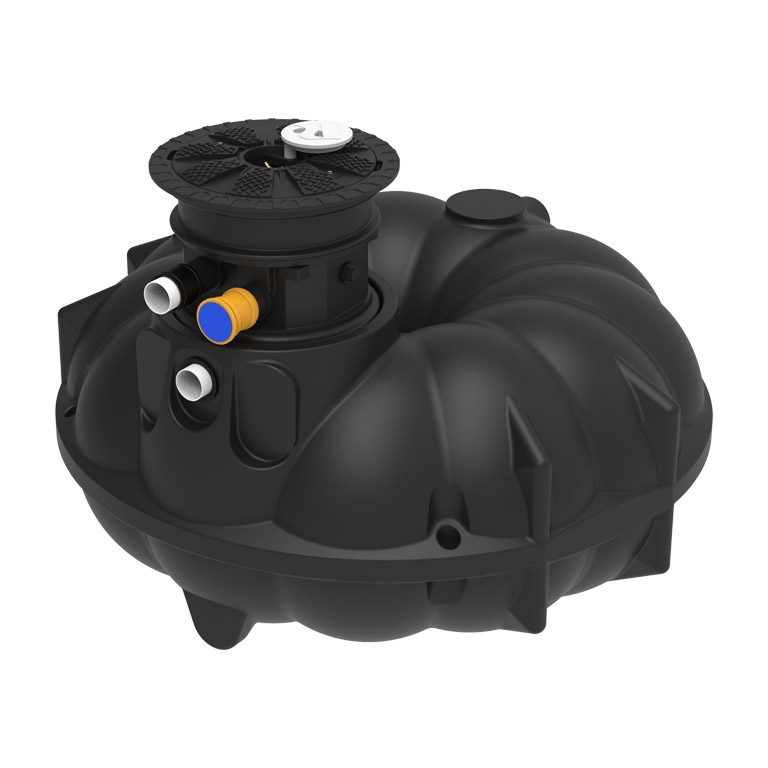
Ideal for residences, cottages, and small businesses.
- tanks from 3,000 to 7,000 L
- automated system functions
- childproof access openings
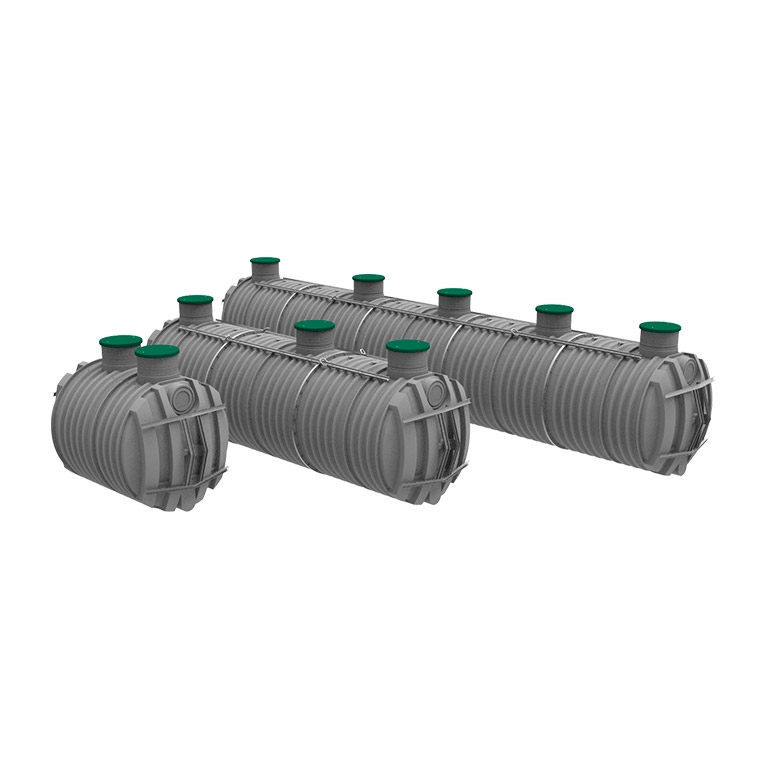
Install virtually anywhere, including under parking lots.
- tanks from 10,000 to 50,000 L
- tank materials to suit any site
- pumps tailored to your needs
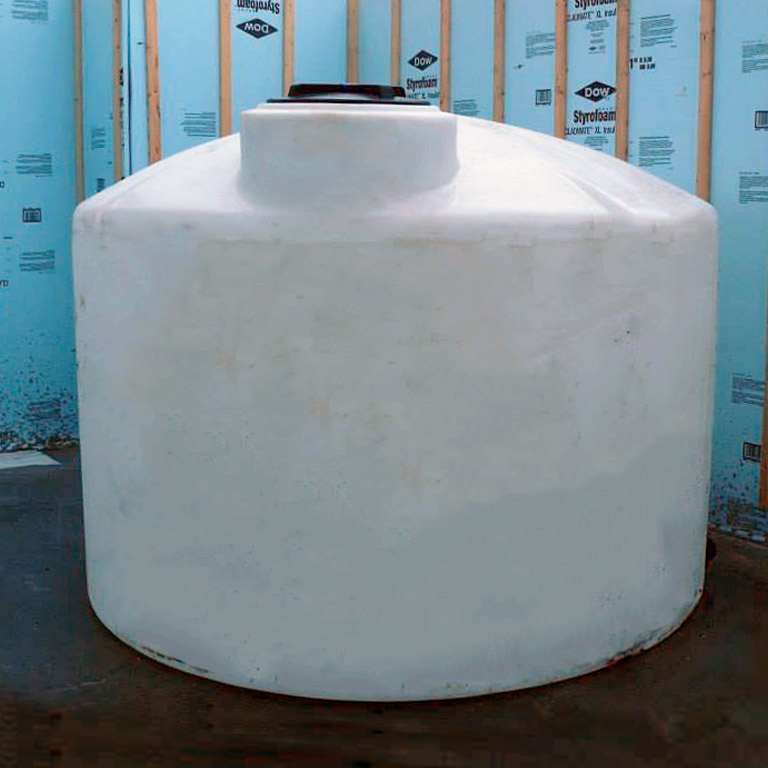
Install indoors or outdoors, depending on use.
- tanks from 4,500 to 13,600 L
- components adapted to your needs
- automated valve system
